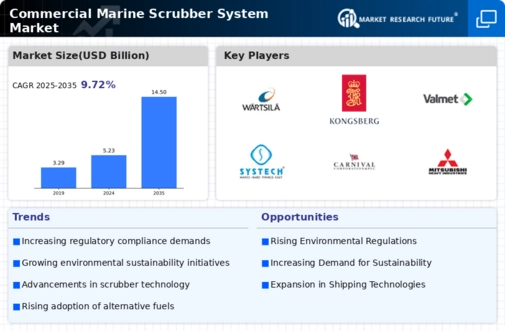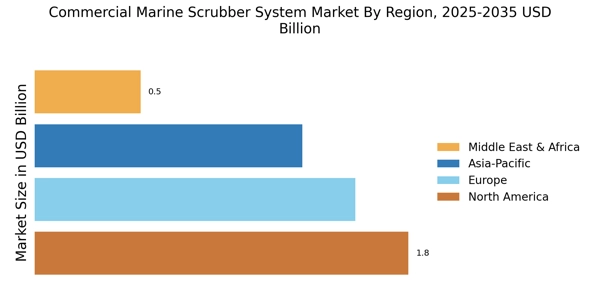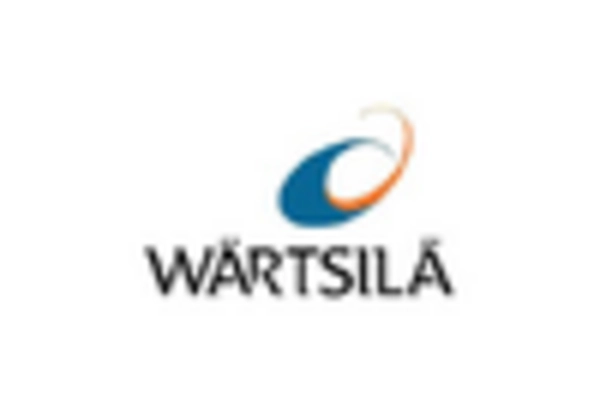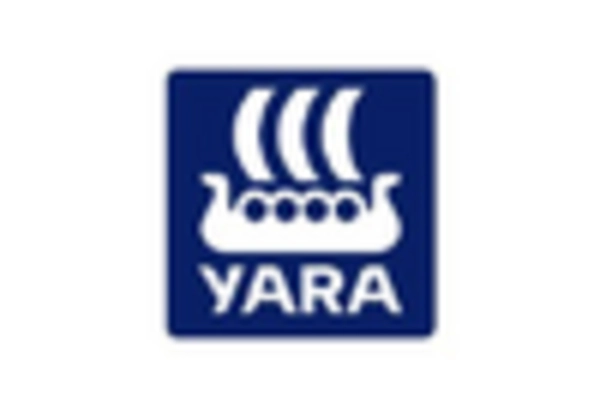Increasing Shipping Activities
The resurgence of shipping activities is a crucial driver for the Commercial Marine Scrubber System Market. As global trade continues to expand, the demand for shipping services is on the rise. This increase in shipping activities necessitates compliance with environmental regulations, thereby boosting the adoption of scrubber systems. In 2023, the shipping industry transported over 11 billion tons of goods, highlighting the scale of operations that require effective emission control solutions. The growth in e-commerce and international trade is expected to further elevate shipping volumes, creating a favorable environment for the Commercial Marine Scrubber System Market. Consequently, the market is likely to witness sustained growth as more vessels are equipped with scrubber systems to meet regulatory requirements.
Growing Focus on Sustainability
The increasing emphasis on sustainability within the maritime sector is significantly influencing the Commercial Marine Scrubber System Market. Stakeholders are recognizing the importance of reducing environmental impact, leading to a shift towards cleaner technologies. Scrubber systems are viewed as a viable solution to mitigate sulfur emissions, aligning with the industry's sustainability goals. In recent years, many shipping companies have committed to achieving net-zero emissions by 2050, further driving the adoption of scrubber systems. This trend is expected to continue, as the market is projected to grow at a compound annual growth rate (CAGR) of around 8% over the next five years. The focus on sustainability not only enhances the reputation of shipping companies but also positions the Commercial Marine Scrubber System Market as a key player in the transition towards greener maritime operations.
Investment in Marine Infrastructure
Investment in marine infrastructure is emerging as a significant driver for the Commercial Marine Scrubber System Market. Governments and private entities are increasingly allocating funds to enhance port facilities and shipping routes, which in turn supports the growth of the maritime sector. Improved infrastructure facilitates the efficient operation of vessels, making it essential for ship operators to invest in emission control technologies like scrubbers. In recent years, several countries have announced multi-billion dollar investments in port upgrades and new shipping lanes, which are expected to boost shipping activities. This trend is likely to create a robust demand for scrubber systems, as operators seek to comply with environmental regulations while maximizing operational efficiency within the evolving Commercial Marine Scrubber System Market.
Regulatory Compliance Driving Demand
The Commercial Marine Scrubber System Market is experiencing heightened demand due to stringent regulations imposed by maritime authorities. These regulations, particularly the International Maritime Organization's (IMO) 2020 sulfur cap, mandate a reduction in sulfur emissions from ships. As a result, ship operators are increasingly investing in scrubber systems to comply with these regulations. The market is projected to grow as more countries adopt similar regulations, creating a ripple effect across the industry. In 2023, the market was valued at approximately USD 3 billion, and it is expected to expand as compliance becomes non-negotiable for operators. This regulatory landscape not only drives demand but also encourages innovation within the Commercial Marine Scrubber System Market.
Technological Advancements Enhancing Efficiency
Technological advancements play a pivotal role in shaping the Commercial Marine Scrubber System Market. Innovations in scrubber technology, such as hybrid systems that can operate in both open and closed loop modes, are enhancing operational efficiency and reducing costs for ship operators. These advancements allow for better performance in various water conditions, which is crucial for vessels operating in diverse environments. The integration of automation and real-time monitoring systems further optimizes scrubber performance, leading to reduced maintenance costs and improved compliance with emission standards. As these technologies continue to evolve, they are likely to attract more investments, thereby propelling the growth of the Commercial Marine Scrubber System Market.


















Leave a Comment